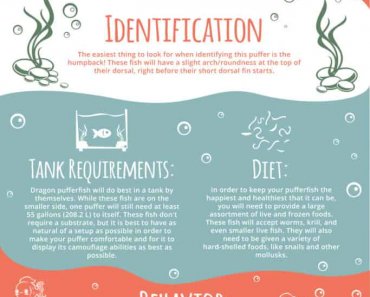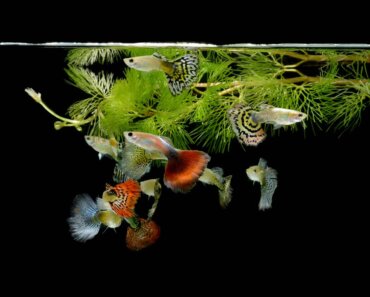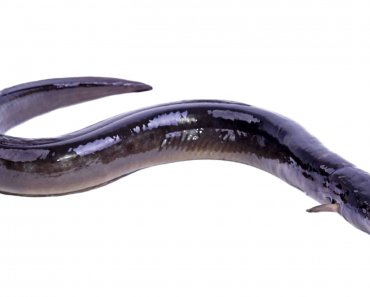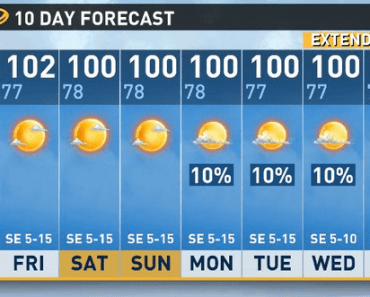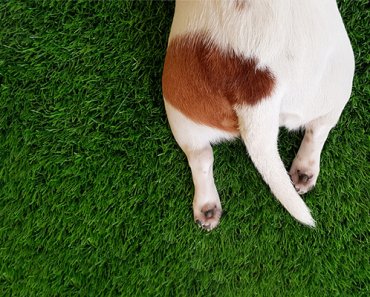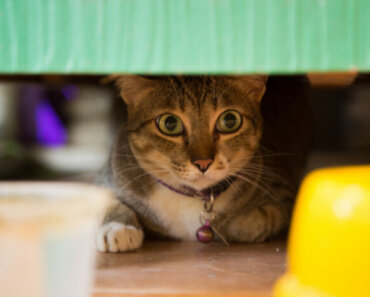
For original article click here
When you go looking for a new dog, you may go to the shelter or a breeder and interact with all the dogs to find the right one. But what about tortoises? With their special care requirements and unique personalities, things can get a little strange. To help you pick the right tortoise for your lifestyle, we’ve put together this handy list of the best and easiest tortoises to care for.
What to Consider When Choosing a Pet Tortoise
Where you live in the world and your lifestyle both dictate what tortoise species you can get. Generally, no single tortoise species is better than the others, but where you live and how you keep them will change what is proper for you to have as a companion.
Food and Care
All species of tortoise have minor differences in what they need for husbandry or food. Even a small tortoise can potentially eat enough for a small army! That amount of grains and produce, not including all the necessary vitamins, can get pricey in some areas. Not to mention the vet bills, heating, and lighting.
Space and Cost
If you live alone in a small house or apartment, a smaller, easier to care for tortoise would most likely be better for you. Money is an object here as well, even if you have a large home. If your budget can’t make room for the needs of a large tort, you should probably stick to the smeller fellas.
Then again, if you have lots of money and empty space, maybe a bigger tortoise would benefit your life? It’s all about what you can afford in terms of space and moolah.
Legality
Many people forget this important aspect of owning a tortoise, or even specific tortoise breeds. Don’t be one of those people! Before purchasing or rescuing a tortoise of any species, be sure to check if they are legal to keep as pets in your area. Check official sites for your state, and read the laws regarding exotic animals before you buy. If buying from a local breeder you should still check the laws just in case.
These laws are always changing and will vary depending on what state you live in. A great way to keep an eye on some of these laws and make a change in reptile keeping is here.
But let’s talk about specific species, shall we? We’ve broken down our list of the best tortoises to keep as pets based on their size.
Small Species of Tortoises
It is recommended that you have experience in caring for other reptiles before trying to get a tortoise. But this is just one of many opinions on the internet by anonymous keyboard warriors. We personally believe that as long as you are passionate and willing to learn, a tortoise is a wonderful first pet reptile. Smaller torties are better beginner pets. Here are some of the easiest small tortoises to care for.
1. The Russian Tortoise
This is a popular choice for new tortoise owners and people who have kept lots of other tortoises. They are fairly inexpensive, small, and beautiful to look at. Easy to care for and quick to bond, these are a great choice.
Sadly, most Russian tortoises are wild-caught, meaning they were taken from their original habitat. You risk getting a sickly or stressed tortoise by going for wild-caught individuals. However, you may be able to find some local breeders of the Russian tortoise. These tortoises can live for over forty years, so be sure you’re ready for a lifelong commitment! Trust us though, they are totally worth it.
The Russian tortoise male can reach roughly five to six inches in length with the females getting to be six to nine inches, so these are tiny friends. The husbandry of a Russian tortoise is quite simple due to their small size. A solid bin to keep it housed at full size comfortably, proper foods, and a UVB light with a basking spot are all it really needs. While tortoises do not swim, be sure to provide a shallow water dish. They do still need to drink and many enjoy a little soak now and again.
The heating for the Russian tortoise is straight forward. A basking spot of around 95 degrees Fahrenheit is suitable, and the temperature should never go below 75. You should avoid excessive humidity or moisture as well.
If you watch your tortoise carefully, and the weather is nice, then you can bring your pet Russian tortoise outside for some fresh air and natural UVB from the sun. A Russian tortoise can stand a cooler temperature for a short amount of time but do try to keep the temperatures around recommended levels.
The size of enclosure for an adult Russian tortoise should be About 2X3 feet. Larger is always better for the tortoise however. Anything smaller and they will become stressed and try to escape. Use concrete mixing tubs, which can be found in most hardware stores, or any long and opaque bin.
The walls do not need to be very tall for these tiny torts. Roughly eight to ten inches is fine. If building an outdoor enclosure, be sure to have it secured with a top over the area. Small tortoises make great snacks for predators!
We could talk about these little sweeties all day long if you let us, but we have lots more torts to cover. This information should give you a good idea what this species needs.
If you want even more information about this particular tortoise species, and you feel like this is the one for you, then these folks have gone into even more details about the Russian tortoise.
2. The Indian Star Tortoise
If you want a truly stunning little pal, the Indian star tortoise might be your new best friend. This is a beautiful little tortoise adorned with incredible star-shaped markings. They do come on the pricier side but this is due to their gorgeous patterns and high demand.
The Indian star tortoise is only available through breeders. It is illegal to import them from their native home. There are no subspecies of Indian star tortoises recognized, but they do vary slightly depending on their geographical locations in the wild.
The lifespan of an Indian star tortoise can be anything from thirty to eighty years, sometimes even longer! If you’re hoping for a tiny forever tortie pal, this is a great choice for you.
The male Indian star tortoise can reach sizes of five to six inches, while females are on the larger side of seven to eight inches. Sri Lanka and northwest localities of Indian star tortoises can get larger, females reportedly getting to be nearly fifteen inches in length.
Heating for the Indian star tortoise should be around 80 to 90 degrees Fahrenheit. The temperature should never drop below 75 degrees, especially in more humid or damp environments.
Like all tortoises, the Indian star tortoise will need a UVB bulb along with its basking spot. Ideally, the UVB light should cover the entire enclosure, while the basking spot should cover one half of the space. This allows your tortoise to thermal regulate while also being able to get that necessary UVB.
Housing for the Indian star tortoise is similar to other small tortoises like the Russian tortoise. Having an outdoor enclosure is actually highly recommended for the Indian star tortoise, but they can be kept indoors easily.
3X2 feet is the minimal size for an indoor enclosure for this breed. This size can also be good for two adult-sized Indian star tortoises. You can use any opaque materials or large tubs, as long as the tortoise has plenty of space to move about.
The Indian star tortoise has the same care needs as most other tortoises. They have a very sweet disposition and do quite well with others of the same species. If you would like to look further into the Indian star tortoise then this should help you out!
3. Mediterranean Spur-Thighed Tortoise
This breed is more commonly known as the Greek tortoise. Depending on the subspecies, the Greek tortoise is readily available as a captive-bred pet. Avoid wild-caught tortoises! We cannot stress this point enough.
Generally, the lifespan of a Greek tortoise in the wild is about twenty years. In captivity, however, they can live well over a hundred years. Be ready for a tortoise that may well outlive you if you want one of these sweet torts. Many people include them in their wills to be sure their buddies are cared for after they pass on.
Depending on the subspecies, the Greek tortoise female can reach a size of five to eight inches, and the males may reach a slightly smaller size. Some females have grown ten to eleven inches, but this is uncommon.
The Greek tortoise’s basking spot should be at about 90 to 100 degrees Fahrenheit, which is a bit higher than the previous breeds we’ve talked about. Be sure to add the UVB light if housing indoors. The Greek tortoise comes from a variety of climates, so check its specific subspecies’ requirements.
A 3X6 foot enclosure of either plywood or opaque plastic is the ideal space for a single or pair of Greek tortoises. Like all tortoises, the enclosure should never be see-through as tortoises have a hard time understanding barriers.
Housing two male Greek tortoises in this size space may not be ideal. Males are more prone to fighting, especially if there is a female nearby. Larger is always better for a tortoise enclosure, so the Greek tortoise may do better on its own and soaking up all your attention. Not too much though, like many tortoises and reptiles the Greek tortoise can become cranky and stressed if handled too often.
Interested in more about these torts? Check out this detailed information if you feel they are the right fit for your life!
4. Kleinmann’s Tortoise
This tortoise also goes by the name of Egyptian tortoise or occasionally Leith’s tortoise. This is a critically endangered species and very hard to find in captivity and the wild. As such, if you found one of these absolutely stunning tortoises it would probably cost you a pretty penny.
This tortoise is on the highest classification of endangered species, so buy them only from a breeder or dealer who works within your country. If buying from out of the country, make sure all shipping records and documentation is correct and up to date or the tortoise will be confiscated and you may face jail time.
The Kleinmann’s tortoise can live roughly seventy to a hundred years of age, reaching breeding maturity at five years or three hundred grams. Reaching three hundred grams is the most important aspect to wait for when breeding these tortoises though, so don’t watch the calendar too closely.
The Egyptian tortoise is considered one of the smallest tortoise species in the world. The males reach a miniscule four inches and around a hundred and five grams. Females can get as big as five inches and four hundred grams.
Heating and lighting for babies of this species is tough. Even though this species is from harsh deserts, the babies are tiny and delicate. An accepted range of heat is from seventy-five to eighty-five degrees Fahrenheit, and of course you need to provide UVB. It is also very important to provide several cool hides and moss hides so the young torts can escape the heat and cool off.
All this needs to be done carefully as it is easy to cook or dehydrate your Egyptian tortoise. It seems the adults will use a similar heat range, only adding a basking spot that can reach up to ninety degrees Fahrenheit. Maybe this all sounds scary, but it’s possible to safely house these fellas. The babies are just more delicate for this species of tortoise so it’s important to take great care.
To help your Egyptian tortoise retain hydration, you may soak them in a tortoise bath or provide a humid hide. This hide can be a sanitized deli container or plastic tub with a hole in the side that is big enough to fit your tortoise completely. Fill this container with moss, specifically Sphagnum moss, and mist it with water until damp to the touch. Water should not drip off if squeezed.
The moss may grow many bacteria and fungi if left in a damp and warm environment. To avoid this, be sure to check and clean this often, maybe even keeping the moss box in the enclosure for a few days each week, then removing it and waiting before adding a new clean box of moss.
While the Egyptian tortoise is one of the smallest tortoises around, they do still need a good amount of space. A tortoise table, which usually measures in at two feet long, two feet wide, and two feet tall can be a good place to start. The Egyptian tortoise is not much of a digger so you don’t have to use bedding that keeps its shape. Some people like to keep these tortoises on a mix of soil and sand, or just one or the other.
Despite its rapid decline in the wild and the strict regulations on this little tortoise, these guys are truly adorable and would make great pets once established and past their hatchling stage.
Interested in more about these tiny torts? Here is a good spot to read up on more about them, and maybe a good way to find your own Egyptian tortoise one day. These tortoises would do best with a more experienced tortoise keeper due to their very specialized needs.
5. Hermann’s Tortoise
The Hermann’s tortoise is one of the most popular tortoise species on the reptile pet trade. They have amazing little personalities and have attractive patterns, too. These tortoises will live about fifty years, the oldest Hermann’s tortoise being a hundred and ten years old! Of course, that age is very rare for this breed, but tortoises are generally a long-lived species if cared for properly.
There are two localities of Hermann’s tortoises currently recognized: the eastern and western. These two kinds both have slight variations in size and color.
Interestingly, there used to be another, but it was removed as its own subspecies called the Dalmatian tortoise. It shares similarities to the western Hermann’s, only the dalmatian tortoise is a few inches larger in some cases and comes with a more varied pattern.
The western Hermann’s tortoise males will reach five inches in length and females can reach six. This species will be more oval or rounded in shape with shell colors of pale yellows and hues of golden or orange. Their shells will be sharply contrasted with black bars and stripes. They are certainly more vibrant than their eastern cousins, which helps them find a place on this list.
The eastern Hermann’s tortoise will get about seven inches for the males, and the females will be around eight to nine inches. The eastern Hermann’s tortoise will appear flatter and broader than the western, with colors ranging from light yellows, tans, and dusky straw. Their shells will have dark patterns of broken up blotches or bars. These tortoises lean more toward the brown and muddy looking colors, which some say are unattractive. We disagree!
This tortoise does well indoors or outdoors as long as the enclosures are secure and appropriately sized. There does not seem to be one agreed upon size of indoor enclosure space for these tortoises, but a tortoise table should be okay for this smaller tortoise. Some of these spaces can be around eight by four feet and two feet tall. Most are made of some kind of plywood or sturdy, opaque walls.
A good temperature range for this tortoise species is an ambient temperature of seventy to eighty-five degrees Fahrenheit and a basking spot of ninety to ninety-five. A UVB light should also be provided on a cycle of twelve hours off and twelve hours on. This gives your tortoise a good day and night cycle if housed indoors. It’s worth noting that this twelve-hour cycle is the same for all indoor tortoises unless your vet or breeder recommend otherwise.
This is a wonderful little tortoise which has truly earned its place as one of the more popular tortoise breeds as pets. If you think this tortoise is right for you, or if you’re curious and want to read more, this might be a good place to get started. The Hermann’s tortoise is great for beginners and veteran keepers alike!
6. Pancake Tortoise
While most tortoises have that big and impressive shell, the pancake tortoise is flat! Usually found way up in mountains, the pancake tortoise uses its flat, flexible shell to go into rocky crevices to escape predators. This tortoise is also a great runner and climber, if you can believe it.
The pancake tortoise can live from twenty-five to thirty-five years, though no one has kept a pancake tortoise long enough in the right conditions to give a better life expectancy range.
Though declining in numbers due to wild exports years ago, there are still a few left. The hardest part of getting a pancake tortoise would be finding one on the legitimate, safe, and legal market. Always buy from a breeder whenever possible; that way we do not harm the natural population in the wild.
Finding a captive-bred specimen may be tough, but the more people who go captive-bred the more tortoises we will have available. Pancake tortoise hatchlings will be very pricey unfortunately, but we think they’re well worth it. What unique little friends!
The pancake tortoise will reach an adult size of six to seven inches and only get about one inch tall. Their colors seem to vary in shades of yellows and light browns with crazy and cool shell patterns.
Due to their rocky habitat in the wild, keeping your pancake tortoise in its enclosure may be tricky. They really love to climb. Whether you house them indoors or outdoors, it is highly recommended you make a screen top so the tortoise cannot climb out. Trust us on this one: if it can climb, it will climb! Unbelievably, a pancake tortoise may very well climb a vertical wall if the mood strikes them.
A forty-gallon vivarium or tortoise table would do a wonderful job in keeping these tortoises indoors. Just remember that more space is always better. And unlike other tortoises, you must provide a screen top or ensure the enclosure has a large, overhanging, interior lip so your pancake tortoise does not climb out.
The heating and lighting requirements for a pancake tortoise are similar to others. Provide a cooler side of seventy to seventy-five and a basking spot of ninety to a hundred. This provides a temperature gradient for your tortoise so they can choose what they want.
This is a tortoise that not many people have, and it is hard to find in both the wild and captivity, but these tortoises are a fantastic choice for all newer tortoise keepers and more experienced keepers, too. We love their unique look and their unusual behaviors. We think they’re a great way to show off the wide variety of tortoise species!
If you want to read more on these strange tortoises then this is a decent place to start.
Mid-Sized Tortoises
These tortoises fall in a limbo range between small and large. They can fall outside either end of the spectrum, so we’re giving them their own category. Adults may be able to handle these tortoises much easier than teens or younger. As with any animal, be sure to know your limits and what it would take for the tortoise’s basic care and costs.
7. The Red-footed Tortoise
This is another wonderful choice for new and experienced reptile keepers. They earn their names due to the lovely red coloration they can get along their legs and feet. The red-footed tortoise can live up to fifty years or more in captivity. That is certainly a lifelong friend!
The adult size for a red-footed tortoise is generally around eleven to fourteen inches in length for the females. There have been some female red-footed tortoises documented at a teeny nine inches in length, however. This is likely due to heavy importing. They are also commonly mass-produced and sold in big chain pet stores. Just be aware of where your tortoise is coming from.
The housing of a red-footed tortoise should be around sixteen inches tall above ground. If housed outside, this should also extend a few inches below ground to help keep your friend from digging out. The size of the enclosure should be around 4X6 feet, bigger if possible.
The heating for the red-footed tortoise is a basking spot of 95 degrees, and the cooler end should be about 80 during the day. At night, this should never fall below 70. The red-footed tortoise likes a wide range of humidity options, so test what works best for your tortoise. Babies tend to like it more humid to help them stay hydrated.
There is always more to learn, and if you think this tortoise is the perfect fit for you, here is some more information to help you get started!
8. The Leopard Tortoise
These pretty torts can live anything from fifty to a hundred years in captivity. How many grandkids would that be? Imagine passing down your beloved tortoise to your family!
The leopard tortoise has some subspecies, due to this, some sizes may vary. In general, your leopard tortoise will get to be anything from ten to eighteen inches at full adult size. Some subspecies, such as the tortoises from Ethiopia and Somalia, have been reported at thirty inches. This is creeping into the big boy range.
The heating for a leopard tortoise should be maintained around 75 to 90 degrees Fahrenheit with a basking spot of 95. Try to keep humidity on the lower side for adult tortoises and always provide a UVB light and maybe the occasional outside time for natural sunlight.
Since the leopard tortoise can get to be a decent size, it is actually recommended to house them outdoors. Some climates are not suitable though. The minimum size for a leopard tortoise is a 10X10 foot enclosure. This enclosure can comfortably fit two adult tortoises. The walls should be about eighteen inches high, and be sure to use wood or opaque material for the enclosure.
The leopard tortoise is not aggressive or territorial, so housing them with many others of the same species is okay. Just remember that if you have a large number of them, then you will need to add extra space.
All in all, the leopard tortoise is a lot of fun and very sweet. They can get big, so be sure this is the right tortoise for you before you get one! Here is more information that could be helpful in deciding.
9. The Marginated Tortoise
This tortoise is beautiful, sporting rich colors as a hatchling. As they age, the colors slowly fade out to more gray and black with pale highlights and an interesting flaring of the rear scutes. The marginated tortoise is also readily available in captivity and can live to be around a hundred years old!
The marginated tortoise ranges between twelve to fifteen inches in adult length, with females on the larger side. They are a great in-between size for a tortoise, not too big and not super tiny.
The marginated tortoise would do best in an outdoor enclosure, larger is always better. A good size for several tortoises of this species would roughly be fifteen by twenty-five feet. Babies may be housed indoors until they are at least four inches in length. You may use a tortoise table or decent-sized bin for them until they are big enough.
These tortoises live in a naturally rocky area, so not only can they climb but they love to dig, so make sure your walls are buried at least six feet below the surface and come up twelve to eighteen inches above ground.
The marginated tortoise is a surprisingly hardy animal, able to adapt and survive in many harsh conditions. You shouldn’t be too worried about your pet as long as you provide plenty of hiding options for your tortoise to pick and choose from.
If you have the space and money for it, you may build an indoor marginated tortoise pen. Just be sure it is big enough to accommodate the tortoise and that you provide the necessary heating and lighting with UVB bulbs. Just keep in mind these fellas really love to move and dig. They absolutely need a lot of space.
The Marginated tortoise is a great opportunity if you’re looking for a hardy, medium-sized tortoise. As long as conditions outdoors aren’t too extreme, this tortoise will thrive. If you want to read more information on this cool tortoise, this is a good place to start.
Large Tortoises
These are tortoises that can only really be housed outside due to their massive size. You also won’t be able to pick these guys up, and depending where you live, they may or may not be legal. There are, sadly, not a lot of large tortoises that can be easily cared for in captivity.
Due to this, we will only list one kind of large tortoise—the sulcata. The only other species of large tortoise that is legal to have as a pet is the aldabras, but they are exceptionally hard to find and even harder to care for. Not to mention, the aldabras tortoise can live for well over 200 years. There just isn’t enough information out there on how to properly keep such a huge tortoise.
10. The Sulcata Tortoise
The sulcata is on this list and for good reason. Rescuing a sulcata tortoise is recommended over buying as they are already big and past that delicate hatchling stage. If you’re planning on getting a big tortoise, just rescue a big fella and give a sweet old man a good home.
Plenty of people buy the babies then get rid of that sweet tortoise once it is too big for them to handle. If a small tortoise is what you want, get a small tortoise. If you want a big boy, then help a rescue sulcata get some love!
Okay, stepping off the rescue soapbox. Let’s get to the details!
The sulcata tortoise can live over 70 years. Sadly, no one has cared for a single sulcata in captivity in the perfect conditions long enough to get a proper estimate. We bet they could live much longer if someone did.
The sulcata tortoise is an amazing choice for first-time tortoise owners, despite their size and food costs. Sulcata tortoises show amazing adaptation skills to almost any environment. They’re friendly and sweet, and boy do they love to be pet.
The average adult female sulcata tortoise can be anything from 24 to 30 inches, with males on the smaller side. These are big backyard tanks and can end up as heavy as 100 pounds!
Since they are so large, it is recommended to keep the sulcata tortoise housed outside. They are hardy can adapt to most climates as long as they are offered either a warm hide for the colder months or cooler shaded places during the hotter months. Places with higher humidity and watering holes would be good options too so they can stay hydrated.
A sulcata tortoise is very much like a tank or a tiny bulldozer. She will knock down anything in her path, so if you have lawn furniture, you might want to rescue it from the tortoise. The walls of their yard should be very sturdy and 24 inches above ground. They should be a whopping 12 to 24 inches below ground, too. Yup, these tortoises love to dig.
There are no generalized sizes on yards for a sulcata tortoise. They’re so large, you really can’t contain them in a tub or standard tortoise tank. Just be sure she has space to explore and burrow. Bigger is always better, especially for a sulcata tortoise.
Heating for this tortoise can be tricky since it should be housed outside. They can handle temperatures of up to 100 degrees Fahrenheit and down to 70. If it gets colder at night, be sure to provide a warm outdoor house for your sulcata.
If you experience harsh long winters, then a sulcata may not be a good option for you. They may be exceptionally hardy tortoises, but they are still a reptile and being too cold can harm or kill them.
Sulcata tortoises sound like a big scary animal to try and care for, but they are tough and can handle a lot as you learn and grow with your sulcata. They are truly gentle giants, and if you feel you can stand up to the massive task of making the perfect home for your sulcata, then here is some extra information that could prove helpful.
Conclusion
There are so many kinds of tortoises, and we love every one. But we can only put so many on one list. Your tortoise should be something that matches your lifestyle, your budget, and where you live. Hopefully, these 10 species of tortoises can help you get a better idea of what you want and can handle in a pet tortoise.

